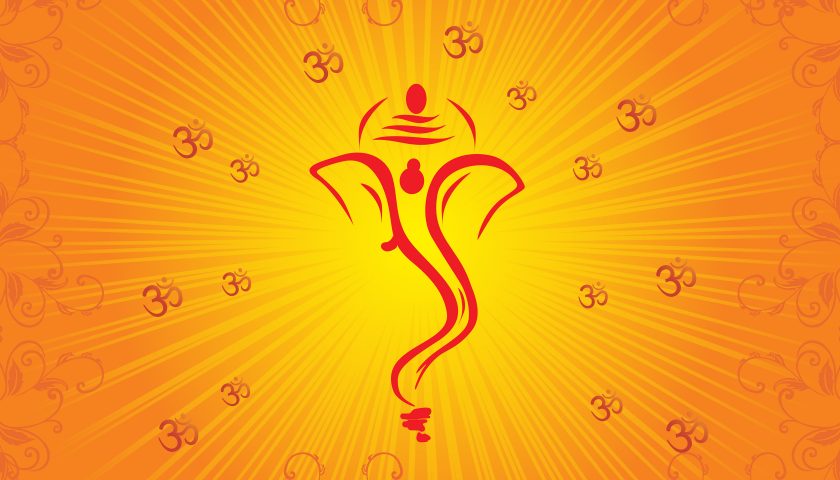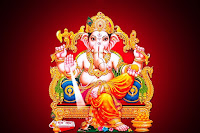The Vedic Way Of Life
जय श्री गणेशा
In my last blog , I wrote about our Karmic debt and how our actions determine what kind of Karma (कर्म) we accumulate and what are the consequences or fruits of the same…
I also mentioned that our Soul or Jeevatma (जीवत्मा) must take the journey to reach the desired destination which it intends to desire in the present life and it is very important that we are conscious of the same of avoid straying from the desired path and getting into miseries and depression and unpleasantness in ones lives
We all deserve to lead lives full of ecstasy as in the words of Sadhguru and I also understood what he meant by the same.
I definitely recommend you to please go through some of his teachings and the Inner Engineering program ….
Reference: https://isha.sadhguru.org/
Anyways coming back to the real point… Is there a way by which we can decipher what are the true objectives or goals of one’s life ? How do we ensure the Karmas we do in our present life takes our soul towards the goal of Spiritual Enlightenment and the ultimate goal of Moksha (मोक्ष) or freedom from Bondage
In fact, the way of Life prescribed in our Vedas or “The Vedic Way Of Life” talks about exactly that
Every Human being or Purusha ( पुरुष) is born with a purpose and the same is based on Purushartha (पुरुषार्थ)
The word Purushartha is derived from two words Purusha and Artha (अर्थ ) meaning “the purpose of the individual or human soul”
GOD or Paramatma ( परमात्मा ) has Four different Purusharthas and objectives and every Jeevatma or Living Soul’s goals are enshrined through them. They are as follows:
- Dharma – Dharma (धर्म) means truth, the right way of living, and human behaviours considered necessary for the order of things in the world. It also means the path of Righteousness and Duty. On an individual level, you can think of Dharma as your true purpose in life or the ethical basis on which you live your life. It is also:
- Being conscious in your actions, words, and thoughts.
- Having compassion and sensitivity to the needs of others.
- Being awake to the existence of the Divine within you
Dharma acts as the foundation of one’s character and becomes the main pillar for achieving the life’s goals or objectives. As per Vedanta (वेदांत) one can discover one’s true Dharma by studying sacred teachings of from the examples of highly evolved people, reflecting on and following what satisfies one’s heart and soul and being conscious of one’s deepest inner feelings
- Artha – Artha (अर्थ ) is the security of having the material comfort you need to live in the world with ease. While some people think that to be spiritual means to be poor, Artha is not about rejecting the world, but being content with the things you own. It’s to live skillfully in a world of material objects that exist for your benefit.
Artha is one of the basic human dignities—to have enough assets to live on and care for your family, without hoarding or being greedy. Artha guides you to ask the question, “What do I see as truly valuable?”Artha provides the foundation for Dharma and Kama. Without prosperity and security in society or at the individual level, both moral life and sensuality become difficult. However, it’s important that your “worldly success” doesn’t violate the moral responsibility of your Dharma and your journey toward Moksha (spiritual liberation).
Vedanta says that you should:
- Discover a way so money runs after you and not vice versa.
- Do work that is compatible to your nature and capabilities.
- Do work that serves society.
- Do work you really love.
- Trust in the infinite organizing power of the Universe.
- Kama – Kama or (काम ) relates to this pleasure, which can be sensuality, but is also art, music, beauty, love, intimacy, affection, fellowship, and kindness—it’s what brings a sense of delight to your life. The right kinds of pleasure lead you toward your Dharma and help you fulfill it with passion. Kama is good and necessary when it exists to support Dharma and becomes part of the richness of life. However, excessive Kama can lead to overindulgence, addiction, sloth, greed, and lust.
To successfully practice Kama, you must ask, “Are my pleasures aligned with my life’s purpose?” The Upanishads tell us, “As is your desire so is your will, as is your will so is your deed, as is your deed so is your destiny and You are what your deep driving desire is.” The fulfilment of one’s desires during his lifetime or the ability to transcend these desires is important for the spiritual evolution of the soul and reach the ultimate destination of Moksha
- Moksha – Moksha or (मोक्ष) means liberation, the realization of the Self, and is the ultimate destination of this human birth. It is the stage of inner realization that the individual self is the same as the Supreme Self. Moksha is the experience of the cosmos within one’s self. It is the experience of the flow and fusion of the Shiva and Shakti energies in one’s self. The experience of union, Oneness or Ekatvam (एकत्वं ) with one’s Higher Self is Moksha.
The path to Moksha can be many and is unique to each Jeevatma or human soul. Each living soul must identify his own unique path to Moksha or Liberation. Moksha is your true nature—it’s who you really are. It includes:
-
- Emancipation.
- Liberation.
- Freedom from the cycle of death and rebirth.
- Freedom from ignorance.
- Self-realization and self-knowledge.
- Consciousness of the Oneness of the Supreme Soul.
- The removal of obstacles to an unrestricted life.
- Access to our full human potential of creativity, compassion, and understanding.
Vedanta tells us that liberation comes to those who knows “Brahman” ( ब्राह्मण ) as that which is the origin and end of all things, the universal principle behind and at source of everything that exists, and the consciousness that pervades everything and everyone.
Any action which does not fall into one of these four categories is not considered to be a part of one’s life’s goal as it is not an action which relates to the qualities of GOD or Paramatma (परमात्मा)
However, one must understand that these four distinct objectives or goals need to be balanced in terms of actions taken towards achieving each of them.
Our Vedic culture has ordained 4 stages of life which every human being must need to follow to achieve the objectives of life or Purushartha which we just discussed. This further enables the Jeevatma or Living soul to advance further in pursuit of Enlightenment or Moksha
The four stages are:
- Brahmacharya ( ब्रह्मचर्य ) – The life of a student or disciple. In this phase, the student must gain the necessary knowledge and skills required for his profession and be ready for his occupation and job. The foundation of Dharma happens during this age
- Grihastha ( गृहस्थ ) – The life of a married or family man or woman where the person lives the life of a responsible person and uses his learning and skills in his profession and practices Dharma (धर्म ) and he goes after the quest of gaining wealth (Artha or अर्थ ) and pleasure (Kama or काम )
- Vanaprastha ( वानप्रस्थ ) – This is the retired life phase or the phase of a Forest Hermit. In this phase, the individual moves from the phase of a family man to a retired person or that of a forest hermit and slowly moves to the path of Moksha and spreading Dharma
- Sanyasin (सन्यासीन ) – This phase is also known as the wandering ascetic or renouncer phase. In this phase, the person moves to a path of a renouncer and goes into the path of Moksha or Spiritual Enlightenment
The Vedic way of life clearly provides the necessary foundation for every individual to lead a balanced life and perform the necessary actions and Karma which leads the path to enlightenment and self realisation.
The challenge in today’s world is the lack of light in people’s lives.. The light of true wisdom which came from Vedas through the Sound of GOD or Creation which is nothing but the sound of “Om” or “Omkara” which is also referred to the Sound of the Big-Bang or the Creation of the entire Universe..
The Human existence in this Kal-Yuga (कलयुग) has been in darkness for a long time and has strayed away from the path of Divine wisdom by being completely entangled with Materialistic goals and uncontrolled desires or Kama and in the process, people are leading lives without being conscious of their true responsibilities and the soul’s needs for enlightenment and Moksha.. the final goal or destination
In the next sections of my blog, I will provide my insights into truly finding the path of self-realization and inner consciousness towards finding one’s true objectives and goals..
जय श्री राम
References:
https://chopra.com/articles/purushartha-the-4-aims-of-human-life


Life sometimes reminds us about it’s soul purpose by giving something or sending someone. It’s on us to realize and act upon it.
Thanks for highlighting these key aspects of our trueness … End of the day it’s always my takeaway for tomorrow.
Sunil, the Vedic way of life is what our foundation has been built on since ages. We have lost touch of it in the last few 100 to 200 years where the connection to our foundation was broken